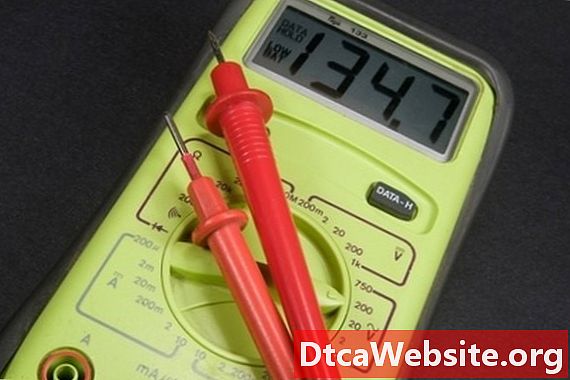
Contenu

Vacuum-operated modulator valves are installed in automobile automatic transmissions for the purpose of controlling shift patterns. The modulator is connected to the engine through a combination of steel tubing and rubber hoses. When higher amounts of engine vacuum act on the modulator, the transmission begins to shift earlier and softer. As engine loads increase, vacuum diminishes, causing the transmission to shift later and more firmly. Various symptoms arise when the vacuum modulator diaphragm ruptures or when vacuum leaks develop. You can troubleshoot these symptoms to determine if your cars modulator is faulty.
Step 1
Start your car and allow the engine to warm up to its normal operating temperature. If the car is in a garage, ensure the garage door is wide open or pull the car to an outer drive. Place the transmission in the "Park" position and set the parking brake firmly.
Step 2
Check the exhaust of the car for blue-colored smoke. When the diaphragm inside the modulator valve ruptures, transmission fluid is drawn up to the engine like liquid through a straw via the steel vacuum tubing. When burned in the engine, this transmission fluid produces blue smoke from the tailpipe.
Step 3
Check the automatic transmission fluid level according to the directions in the owners manual for your car. Unlike with engine oil, most automobiles require the engine to be operating when you check the transmission fluid level. A ruptured modulator diaphragm causes a visible loss in fluid.
Step 4
Drive the car on a flat roadway where impeding traffic is not a concern. Begin from a full stop and accelerate lightly to 25 miles per hour while listening to the speed of the engine. If the engine speed is too high and the transmission shifts much later and firmer than usual, this is characteristic of a bad modulator valve.
Check the engine for a rough and fluctuating idle speed. Listen for any whistling sounds. Whistling is indicative of a vacuum line leak that can create modulator problems that result in poor shifting.
Tips
- Vacuum leaks from any source have an effect on the vacuum modulators ability to operate properly.
- Rubber hoses are used to connect the steel line from the engine to the inlet of the modulator. Leaks in the hoses are not uncommon, and the symptoms created may appear as serious transmission problems. Be sure to bring this up if you have a mechanic look over your car.
Warnings
- Never wear loose clothing when working under the hood of your car with the engine operating.
- Keep hands away from moving parts and hot exhaust pipes and manifolds.
Items you will need
- Automobile owners manual


